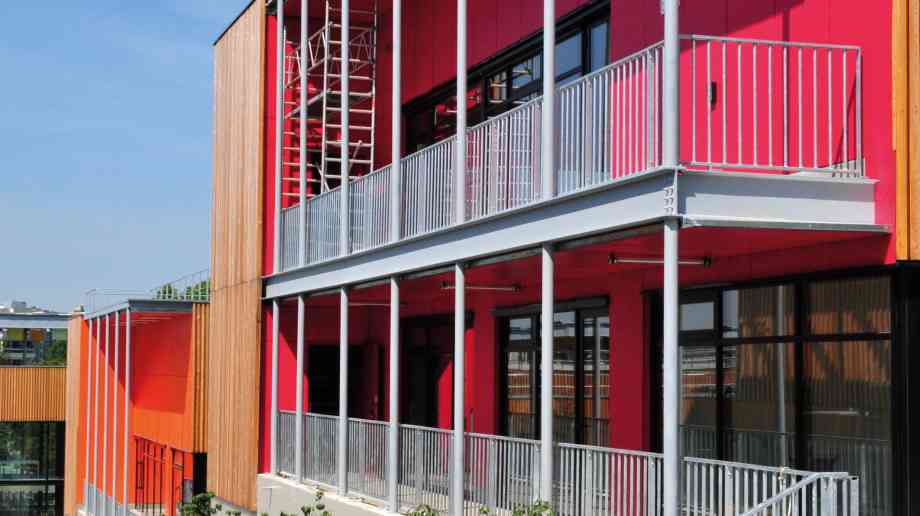
Adopting structures for effective governance
The government’s U-turn on forced academisation has brought the issue of governance back onto the educational landscape. Sam Henson, head of information at the National Governors’ Association, explains how effective academy governance works. Regardless of sector or industry, the importance of strong governance is sometimes overlooked. All too often the investment into good governance practice is considered as an ill-timed after-thought when things have already started to go wrong. But good governance is at the heart of organisational improvement – you only have to look at recent examples where organisations have failed, such as the collapse of Kids Company in 2015, to see that those organisations not investing thought and time in identifying and adopting strong governance structures and practice do so at their own peril. At the National Governors’ Association (NGA), we have taken to using the following definition of governance from the Institute on Governance in Canada: “Governance determines who has power, who makes decisions, how other players make their voice heard and how account is rendered.” If governing boards keep this description in mind then it should help them adopt structures and practices to ensure more effective governance. In March, the government released its white paper, Educational Excellence Everywhere, with the headline policy that all schools would have to convert to academy status by 2022. Although the original intention to legislate for universal academisation was subsequently dropped amidst much pressure from parents, governors, and even from within the Conservative party, the government has made clear that its preferred outcome is for all schools to become academies. It will use other drivers, including in some cases compulsory academisation, to achieve that goal. The government has also said that it thinks the majority of schools will be governed through multi-academy trusts (MATs) rather than as standalone schools. This potential shift to a fully academised system presents an extensive yet, in NGA’s view, underplayed change, one where all schools are effectively moved into the third sector and so bringing about a transformation to governance by trusteeship. How are academies governed? Academies are charitable companies limited by guarantee which exist to deliver their charitable aims on behalf of their pupils with the trust board accountable for the performance of the trust. Academy trusts have a contract with the Department for Education (DfE), the Funding Agreement, which sets out the basis on which it will be funded and for which schools. Its governing document is the Articles of Association, which sets out how members and trustees are appointed and provides over-arching written rules for running the company. An academy trust that is responsible for more than one academy is called a multi‑academy trust (MAT). A MAT is a single legal structure that is responsible for maintaining, managing and operating multiple academies within it. All academy trusts have at least two layers of governance – the members and the trustees. The members are the top governance tier operating as the custodians of the governance of the trust, and they usually have the power to appoint some of the trustees. Both single academy trusts and MATs have an overarching board of trustees. The academy trust board is appointed to govern the trust and the academies within it. In MAT’s there are also often additional layers of governance, depending on the size of the organisation. These are committees of the over-arching trust board and often referred to as a ‘local governing body’ (LGB) which is essentially, a committee of the trust board – NGA prefers local governing committees for the sake of avoiding confusion with the role of maintained governing bodies. As of 31 March 2016, 66 per cent of secondary schools and 20 per cent of primary schools are already academies; 65 per cent (3,611 out of 5,449) of academies (including free schools) were in MATs, up from 53 per cent at the end of the 2013/14 academic year. It is important to ensure there is differentiation between members and trustees to provide sufficient independent oversight and challenge; while some members can also be trustees, this should be kept to a minimum. The legal minimum is three, although DfE advice is now that there should be at least five. The members receive an annual report on the performance of the trust from the trustees, in order to ensure the trust is meeting its charitable aims, are responsible for signing off changes to the articles of association and will usually have the power to appoint and remove a number of trustees. The trustees will appoint a number of people to such a committee but their role may differ significantly to that of ‘governors’ as they are likely to only be delegated certain decision making functions as prescribed by the board of trustees. In some cases, no powers or functions will be delegated at local level and instead, a school council will be appointed as the eyes and ears of the local context. Standalone or MAT Last year, the NGA, the Association of School and College Leaders (ASCL) and Browne Jacobson published Forming or Joining a Group of Schools: staying in control of your school’s destiny; a publication designed for governors and senior leaders of both standalone academies and maintained schools to help them consider the benefits of forming or joining a MAT. The DfE expectation, as outlined in the white paper, is that most schools converting to academy status will be expected to do so by either forming or joining a MAT unless they are ‘successful and sustainable alone’ – but even when classed as such, going it alone will not necessarily be the best course of action. The number of pupils in the school will be a key deciding factor as to whether it is sustainable to be a standalone school. NGA is led to believe from recent department speeches that probably only those which are over 1,000/1,200 pupils will be allowed to remain stand alone. The performance of the school, including exam results and Ofsted judgement may also determine the options available. Schools in ‘special measures’ are already subject to forced academisation. Although no specific announcement has been made about ‘requires improvement’ schools, it is highly unlikely that they will be allowed to be standalone academies. Structure, delegation and knowing your schools The board of trustees is accountable in law for all major decisions about its academies – this does not mean that the board is required to make all the decisions itself, especially in a MAT where it would impractical for it to do so. Delegation to the CEO and/or executive principal, regional and local governing committees and academy councils should be considered. A scheme of delegation (SoD) is the key document agreed by the MAT board to define the lines of responsibility and accountability. It establishes who makes which decisions and should ensure that the lines of responsibility and reporting are clear to those within the MAT – members, trustees, committees (including local governance committees), executive leadership and academy heads. This is an area in which practice is still developing and SoDs have not been as clear as they need to be. Before drafting a SoD, the trust will need to ensure the governance structure is fit for purpose. There is no one right way, how much the board decides to delegate will vary depending upon: the size of the MAT: number of schools and/or number of pupils; the way in which its leadership is structured; geographical spread of schools; ethos and values; and strength of schools. Scheme of delegation An effective scheme of delegation: promotes a culture of honesty, transparency and accountability; ensures the executive leadership is clear about which decisions the trustee board and its committees take; ensures that the role of the executive leadership is fully understood throughout the MAT; identifies responsibility for the appointment and performance management of the lead executive (usually a CEO/executive head) and individual academy heads; identifies responsibility for HR policy and practice in each academy; identifies responsibility for oversight of each academy’s budget; identifies responsibility for assessment of risk in each academy; identifies responsibility for oversight of educational performance in each academy; and identifies the mechanism for taking account of the views and experiences of stakeholders. The SoD is intended to be a working document that the trust board and the executive team should revise and adapt in response to their context and circumstances. As MATs mature and grow the workings of the MAT, both in terms of governance and operational leadership, are likely to change. Whatever the structure and delegation agreed, it should be reviewed annually and revised if necessary. Adaptation is not a failure, but a recognition of the need to be responsive to changing circumstances. NGA has devised four model SoDs, which represent a range of approaches: with academy governing committees; with academy councils; with cluster governing committees (reporting on a number of academies); and with so-called ‘earned autonomy’ (variable levels of responsibility for academy committees, often depending on the school’s performance). Further Information www.nga.org.uk
Latest News
26/11/2025 - 10:18
The Diets Toolkit recommends that governments introduce more plant-based options in schools, alongside hospitals and other public institutions,
25/11/2025 - 13:05
New data from The Careers & Enterprise Company (CEC) finds that around two-thirds of businesses believe a two-week block of work experience is too time-consuming and offers too little benefit.
25/11/2025 - 12:57
The Youth Sport Trust has launched its latest Class of 2035 Report, warning that unless urgent action is taken to increase physical activity among children, this generation will face poorer health and outcomes.
24/11/2025 - 09:40
The Education Committee has launched a new inquiry to understand how reading can be nurtured, and what its benefits are, amid a decline in the number of children reading for pleasure.
21/11/2025 - 09:37
The framework provides a practical guide to integrating education and health for better outcomes for children and young people.







